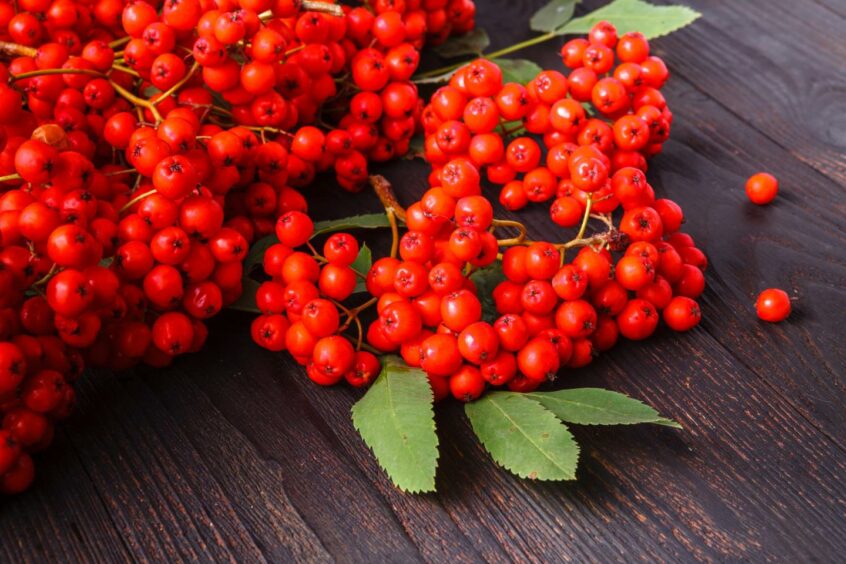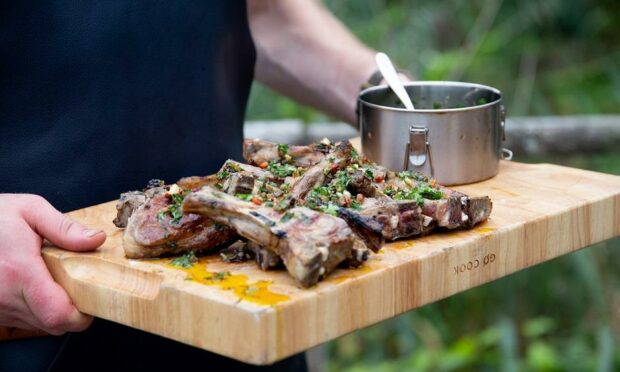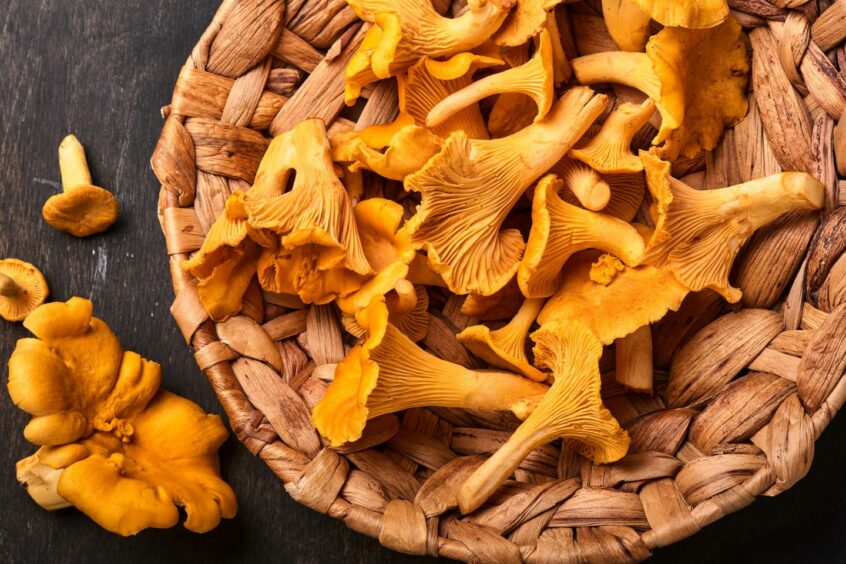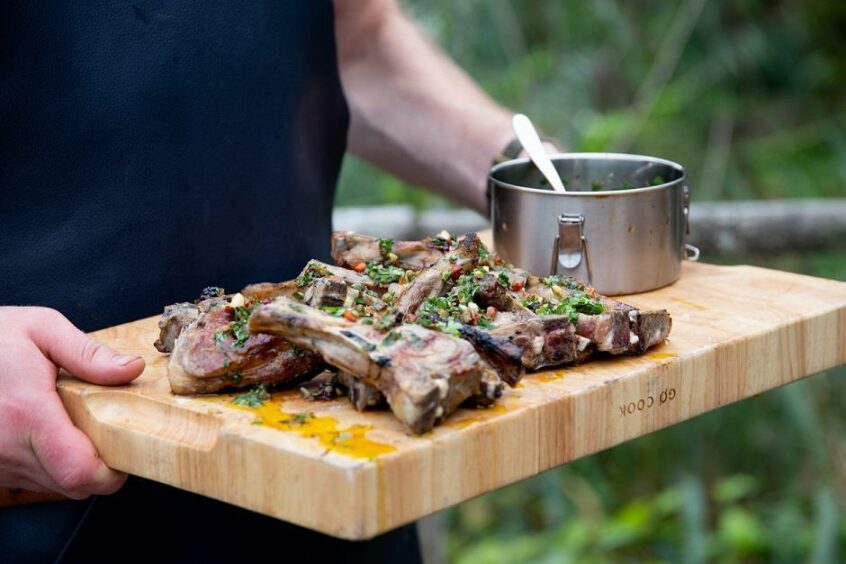Foraging has been around for hundreds of years, with cooks, foodies and the inquisitive venturing out to taste what’s on their doorstep.
Most often associated with the summer months, it’s an activity that can actually be done at any time of the year – you just need to know what you’re looking for.
Andy Waugh, chef owner of Mac and Wild restaurants, who grew up in the north Highlands, is on hand to help us navigate autumn foraging.
“My message about foraging is to focus on seasonality,” he said. “Every area of the UK is different in terms of what’s available to forage.
“I live in London right now, but I grew up in the far north of Scotland, about an hour north of Inverness.
“The seasonality is so different in both those places. I’ll often go down to the south coast and do a bit of foraging. We’ll be four to six weeks ahead on some things here than they are in Scotland.”
Get to know your local food
As different parts of Scotland will experience different climates, weather and harvests, Andy recommends getting to know what your local area has available.
“You can find locality with different species as well,” he continues. “For example, the Highlands, particularly up towards Inverness, are amazing for mushrooms. I think it’s also known as the ‘mushroom capital of the UK’.
“I didn’t appreciate it when I lived there but chanterelles are basically coming out your ears up there.
“There’s a lot more food available to pick in the summer, but I prefer doing it in the winter as, because there are fewer things available, it means you can really get to know them.
“Really get to know what is on your doorstep before you eat it. You get some natural foods that look like an imitation but you’ve got to understand the potential dangers as well.”
What’s available?
A lot of different types of food are available for foraging in the autumn, such as mushrooms, rowan berries and some brambles. Andy advises that not all may be what it seems, however, especially when it comes to chaterelle mushrooms.
“Mushrooms are available all year round,” he adds. “For me, the chanterelles are the best kind and they are such an easy one to find. They’re little golden nuggets that are very obvious.
“There is something called a false chanterelle, which has a slight subtle difference in its gills underneath. It won’t make you sick, it just doesn’t taste as good.
“Right now we also have rowan berries. There is a saying we have in the north – wait until the first frost before picking your rowans, but the further south you are the longer you have to wait.

“There are lots of different berries around at this time of year too. You’ve rosehip, hawthorns and sloes, for example. That’s what I’d be picking.
“My motto on life is that fresh is best. If you go out foraging, you can pick it and eat things at their freshest – we’ve all gone out and picked strawberries and raspberries in the summer. There’s nothing more satisfying than eating them fresh.”
Have a go at making something with foraged foods, using Andy’s recipe below.
Lamb PGI chops and foraged salsa verde
Andy says: “Use this recipe to celebrate the seasonality of Scotch Lamb by combining it with the beauty of what’s growing in the wild. For making this dish in autumn, I recommend foraging for fresh brambles, cobnuts and ceps or chanterelles – depending on what you can get your hands on.
“You can find brambles almost anywhere – woods, hedges, heaths and maybe even your own garden if you’re lucky! And you can substitute them for practically any other berry you’re able to find without impacting the flavour of the dish too much.
“The ripest of cobnuts can usually be found in October when hazel tree leaves start to change colour. You’ll know they’re ripe enough to eat if the papery outer covering has started pulling back from the nut.”
Serves 3-4
Ingredients
- 20 rowan berries
- 30ml water
- 30ml white wine vinegar
- 20g sugar
- 10 Scotch Lamb PGI chops / cutlets, ideally around 2cm thick
- 10 brambles (substitute with shop-bought blackcurrants or any other berry if needed)
- 1 large bunch parsley, roughly chopped
- 1 small bunch basil, roughly chopped
- 1 small bunch coriander, roughly chopped
- 1 handful cobnuts (substitute with shop bought hazelnuts), roasted and roughly chopped
- 1 tbsp capers, bashed or chopped
- 1 tbsp cornichon, finely diced
- 1 clove garlic, roughly chopped (or use pickled wild garlic)
- Juice from half a lemon
- 250ml rapeseed oil
Method
- Add the rowan berries, water, white wine vinegar and sugar to a sauce pan and bring to the boil. Reduce until 90% of the liquid has disappeared and you get a jam-like substance.
- Keep the lamb to one side and mix all of the ingredients, including the rowan jam, together in a bowl. Keep adding oil until you have a very loose mixture.
- Bash the mixture around a little so the ingredients explode and the flavours get to know each other.
- Drizzle the lamb with a little veg oil and massage with a good helping of fine sea salt or table salt.
- Crank the heat up and sear the meat on both sides – depending on the thickness you might need to sear for longer but they should only need 1-2mins on each side.
- Cover and leave the meat to rest for 5-10 minutes whilst you get everything prepared.
- Place the cutlets on a big dish and drizzle the wild salsa over the top.
- You can leave some more sauce in a dipping bowl for everyone to help themselves.



